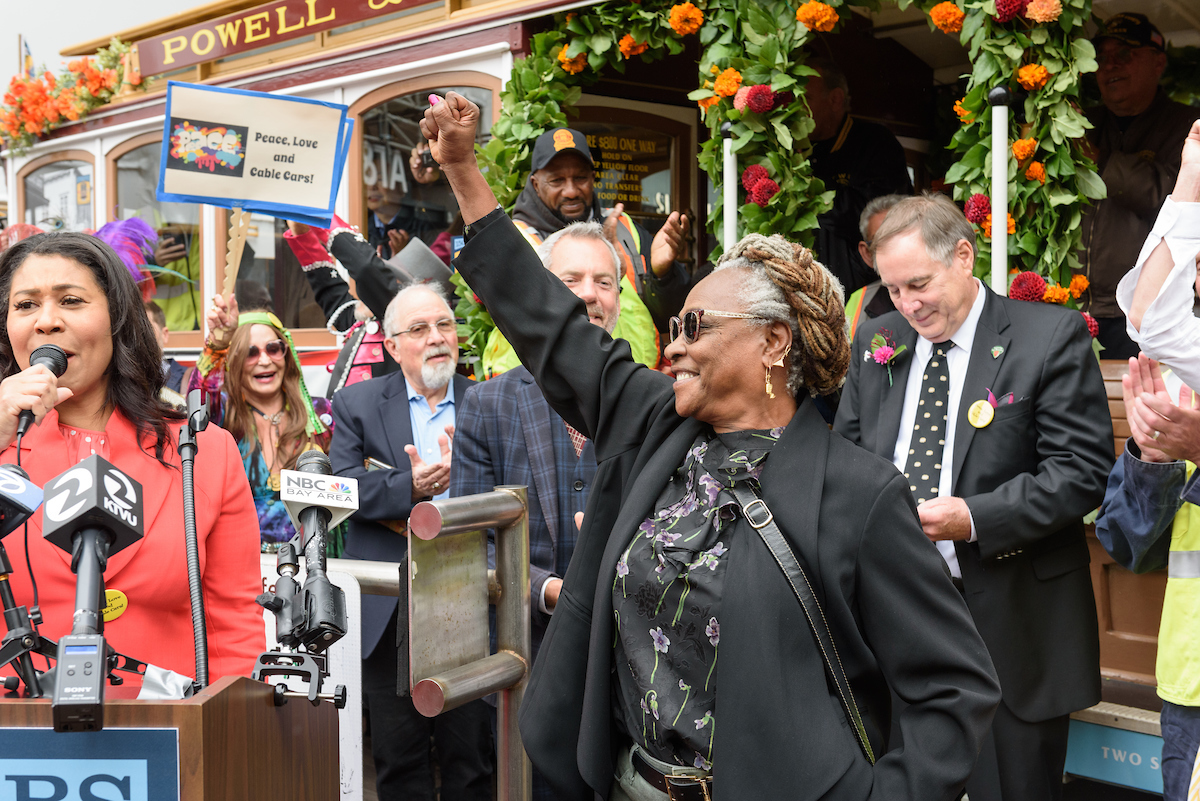By
 Fannie Mae Barnes smiles at the crowd while being recognized at a cable car 150th anniversary event in August 2023.
Fannie Mae Barnes smiles at the crowd while being recognized at a cable car 150th anniversary event in August 2023.
Fannie Mae Barnes made history in January 1998 when she became San Francisco’s first female cable car grip. We hear her story in the latest episode of Taken with Transportation, “Breaking Glass Ceilings Halfway to the Stars.”
“I started working at Muni as a bus operator in 1981,” Barnes tells Taken with Transportation host Melissa Culross. “[But] I was kind of getting tired of the bus situation because it’s pretty difficult operating a bus in San Francisco because you have to deal with a lot of hazardous situations, people as well as the traffic. And so, I was about to quit my job.”
Instead of quitting, Barnes moved to the cable car division where she worked as a conductor for about six years before training to become a grip. The grip heaves the lever that grabs hold of the cable to propel the cars. The job takes strength, mental and physical coordination, confidence and determination. Many potential grips, including men, don’t finish the training. Barnes did.
“When I made it, everybody was excited,” she says.
Barnes may have been the first female cable car grip, but she wasn’t the last. The second, Willa Johnson, is also featured in the episode.
“For me, it’s important that I’m doing it, and that I’m still doing it,” says Johnson, who became a grip in 2010. “It takes a while for, I guess, for some of the men that really felt like ‘This is not a woman’s job’ to warm up to you and say, ‘You know, I really doubted you, but you are really doing a good job.’”
Two more women became cable car grips after Johnson, and she teases that a fifth is coming.
Listen to “Breaking Glass Ceilings Halfway to the Stars” for more about what Barnes and Johnson experienced when they became grips. You can find it and all the episodes of Taken with Transportation on our podcast page (SFMTA.com/Podcast).
Published January 25, 2024 at 12:36AM
https://ift.tt/PrtiMT3
Comments
Post a Comment